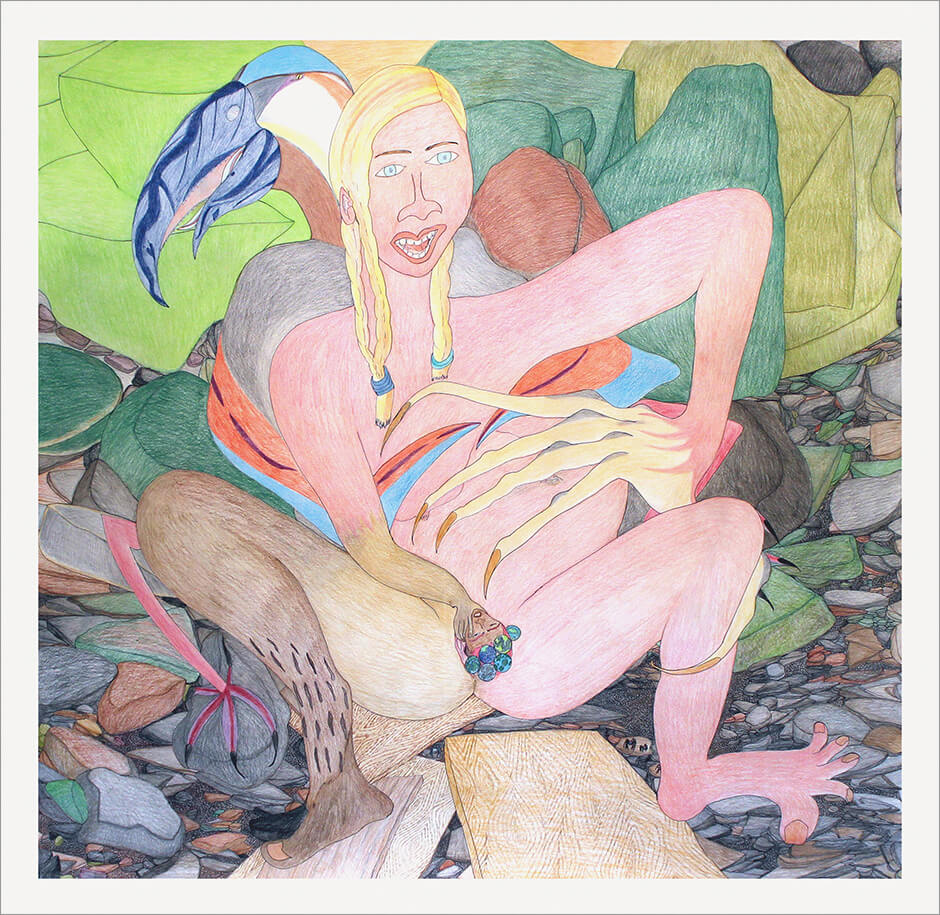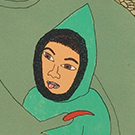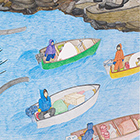Happy Mother 2013

Shuvinai Ashoona, Happy Mother, 2013
Coloured pencil, graphite and ink on paper, 123 x 127.5 cm
Montreal Museum of Fine Arts

Happy Mother centres on a blue-eyed, blond-haired woman in labour, presenting a crowning baby whose head is encircled in globes. She is embraced by a prehistoric bird, which seems to be supporting her as she gives birth. Shuvinai Ashoona states, “I was thinking that the hair was in the shape of a circle, the same as the circle of the world from up above.” Based on the artist’s comment, it can be interpreted that the birthing mother may be part of an underworld or otherworld. In relation to this work, Shuvinai has not mentioned being witness to childbirth nor her own very real and personal experience of giving birth. That she has not made such comments in relation to Happy Mother, nor other works that deal with the subject of a woman giving birth, for example Birthing Scene, 2013, suggests that the images may be intended to depict a depersonalized experience, which in turn allows them to convey a greater sense of the mystical or supernatural.
As the title of the work states, the woman appears to be delighted, despite the physical pain of childbirth. She seems to be human, but closer examination reveals monstrous appendages, with a gigantic claw-like hand that morphs from her left wrist and a dark, hairy right leg that resembles the leg of a caribou. This type of hybrid person is seen in other works such as Composition (People, Animals, and the World Holding Hands), 2007, in which the artist creatively and seamlessly adds animal appendages, such as a swan’s ear or a lobster claw, to human figures. In Happy Mother, the midwife is an enormous bird with a colourful head and large blue, toucan-like beak. The bird’s orange and light-blue wings wrap delicately around the woman from behind, gently holding her breasts, while its clawed feet seem to grip the land for leverage. The background illustrates lush greenery that is at odds with the rocky ground and plywood on which the mother and the bird squat.
Traditional Inuit births involved a midwife in the birthing process, except in cases where the supernatural was expected to intervene and a shaman was sent in as well. Perhaps the bird is acting as the shaman here? The infant that is being pulled from the womb by the delicate hand of the birthing mother is crowned with six small globes (a motif that appears repeatedly in much of Shuvinai’s work of this period), which are dancing atop its head. This birth is mystical. The infant seems destined for Earth, but as with many of Shuvinai’s tableaux, one can only guess.

 About the Author
About the Author
 More Online Art Books
More Online Art Books
 Acknowledgements
Acknowledgements